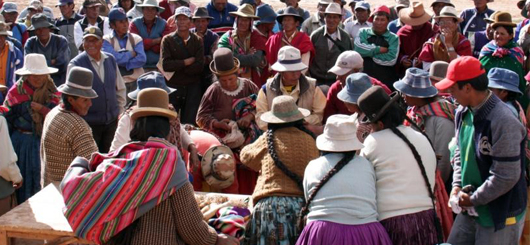Conceptual framework
There are many definitions of social cohesion based on its various facets (political, economic, social, and territorial) and dimensions (the fight against poverty and income distribution; and inequality and exclusion social. Furthermore, the concept is directly related to good governance, democracy and institutional quality.
FAO promotes actions to achieve territories that are free of hunger and are socially cohesive, with institutions and actors that foster the inclusion of poor sectors and groups that are especially affected by inequality (women, youth, indigenous communities, and migrants).
Social cohesion underlines the relationships between the mechanisms of social inclusion and exclusion and the citizens’ perceptions and reactions to them (CEPAL and EUROsociAL, 2007). A socially cohesive community forms a context in which citizens share a feeling of belonging and inclusion, they participate actively in public affairs, they tolerate existing differences, and they enjoy a relative equality in access to public goods and services and distribution of income and wealth (Program URB-AL III).
As part of the conceptual framework of the 2030 Agenda for Sustainable Development (United Nations, September 2015), local territorial development strategies and actions must be geared towards reinforcing social cohesion. In coordination with subnational governments and the social actors that are the beneficiaries of this model, the idea is to:
- promote the consolidation and expansion of social protection, which contributes to reducing food insecurity;
- empower and build the capacity of the most vulnerable people and rural poor to invest in their future;
- reduce the inequalities in access to productive resources, social services (gender inequalities), public services and the justice system;
- employ programs and policies that foment the creation of opportunities for decent agricultural and non-agricultural employment;
- design public solidarity mechanisms, especially for the most excluded sectors; eradicate child labor in agriculture;
- reinforce rural institutions, local producer and community organizations and the sustainable use and management of natural resources;
- facilitate investment of remittances, mobilize migrants and the diaspora, and facilitate the transfer of knowledge and skills.
FAO proposes the Green Negotiated Territorial Development (GreeNTD) approach to reduce imbalances in power (determined by unequal access and control of resources and information) through the creation of agreements including all of the territorial actors, promoting their appropriation of the development process. Relevant experiences supported by FAO have helped identify elements that are essential to social cohesion, such as: building trust, dialog, negotiation and a socio-territorial agreement among the various actors.

